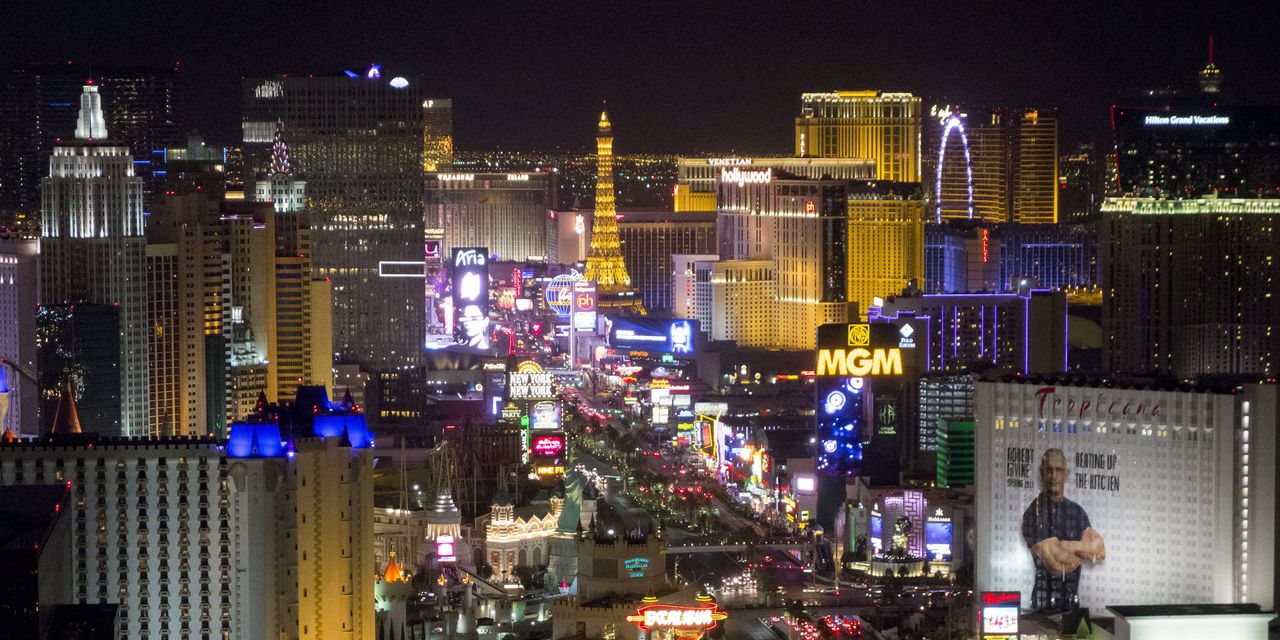More people die in flash floods in the U.S. each year than from tornadoes, hurricanes or lightning.
That’s a reminder from the National Weather Service (NWS) after sudden, heavy downpours drenched Las Vegas on Thursday night, sending water gushing into casinos and onto city buses, as well as stranding cars and leaving citizens and tourists scrambling.
Kentucky and broader Appalachia also suffered flood-linked fatalities this week, mostly due to rising water from creeks and rivers, after a rain-soaked stretch of weather. Kentucky’s governor said at least 16 people have died, some of them children, a toll he expected to grow as the rain kept falling.
But as the situation in Vegas shows, a place doesn’t need to be near a body of water to be hit by a dangerous sudden deluge. Flash floods can strike areas where development and concrete can’t soak up the excess sudden rainfall, and aged infrastructure struggles to drain the water in real time.
Flash flooding is typical in the Southwest U.S. during monsoon season, when a seasonal change in winds draws moisture into the area, which can lead to more showers and thunderstorms. But an exceptionally dry year so far means that the bare ground can also be as hard as concrete in some places, allowing for restricted absorption.
So what exactly is flash flooding? Are there actions to protect against it?
And does the impact that fossil fuel-linked
CL00,
climate change is having on intensifying extreme weather extend to flash floods?
According to the NWS, a flash flood is a flood caused by heavy or excessive rainfall in a short period of time, generally less than six hours. Flash floods are usually characterized by raging torrents after heavy rains that rip through river beds, urban streets or mountain canyons, sweeping everything before them. They can occur within minutes or a few hours of excessive rainfall.
They can also occur even if no rain has fallen, such as after a levee or dam has failed, or after a sudden release of water by a debris or ice jam. And the inability of some municipal storm sewers to keep up with the water removal can aggravate the situation.
Sometimes both flash flooding and rising waters from rivers and creeks can devastate an area at the same time. In 2017, after the very dangerous and expensive Hurricane Harvey swamped coastal areas, it stalled around southern Texas for days as a weakening hurricane that brought catastrophic flash and river flooding, the NWS archives say.
And during 2021’s Hurricane Ida, the NWS office in New York declared its first-ever set of flash flood emergencies in the region, an alert level that is reserved for “exceedingly rare situations when a severe threat to human life and catastrophic damage from a flash flood is happening or will happen soon,” it said at the time.
One of the biggest differences between flash floods and generalized flooding is that flash floods can be more dangerous than people think. Even a few inches of water can have a current that knocks people down. Just a few feet can send a car floating. Flash flooding at night is particularly dangerous, because unknown depths are disguised, looking simply like wet surfaces.
The Red Cross has some tips for flood and flash flood safety, such as getting out of your vehicle and moving to higher ground if you get caught on a flooded road.
But most worrying, perhaps, is that flash flooding is expected to increase as there are more extreme precipitation events brought on by climate change, meteorologists and climate scientists say. This is because warmer temperatures increase evaporation, which puts more moisture into the atmosphere that then gets released as rain or snowfall.
Cities must dedicate more of their infrastructure budget to fortifying storm sewers. And they might think of leaning on nature to fight nature.
The Natural Resources Defense Council argues that populated areas, especially, must think of permeable pavement and rainwater harvesting (instead of simply allowing for too-slow runoff), green roofs, rain gardens and additional tree planting. Read more from the NRDC.

A formerly sunken boat sits high and dry along the shoreline of Lake Mead this year near Boulder City, Nev. Water levels have dropped as the Colorado River reservoir behind Hoover Dam recedes due to drought and climate change.
AP
Traditional flooding is on the rise, too. Some parts of the Western U.S. are being hit with a long-running drought, but also moments of high flood risk. The Yellowstone River earlier this year shattered its previous record and reached its highest water levels recorded since monitoring began almost 100 years ago, impacting the beloved national park.
Research has documented that this increase in extreme precipitation is already occurring, not only in regions like Yellowstone, but around the globe,” says Frances Davenport, a researcher in atmospheric science at Colorado State University.
“The fact that the world has experienced multiple record flooding events in recent years — including catastrophic flooding in Australia, Western Europe, India and China — is not a coincidence,” Davenport said in a commentary. “Climate change is making record-breaking extreme precipitation more likely.”
And, yes, it’s not an either/or scenario. Climate change’s impact in intensifying heat and drought leads to wildfires that destroy natural barriers. This raises the potential for dangerous mud slides with flooding.
In fact, climate change can pack multiple challenges, some seemingly at odds with another.
Back in Nevada, some commenters on social media were empathetic with the night Vegas lived through, given the danger to the bustling gambling and retirement destination. But they welcomed rain that could help replenish a low-and-dropping Lake Mead.
More Living With Climate Change:
Yellowstone flood wake-up call: Is your home adequately insured?
Why you, and your wallet, must get used to heat waves
Severe heat: 5 electricity blackout risks facing the entire U.S., not just Texas
